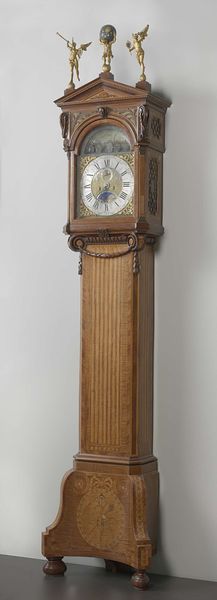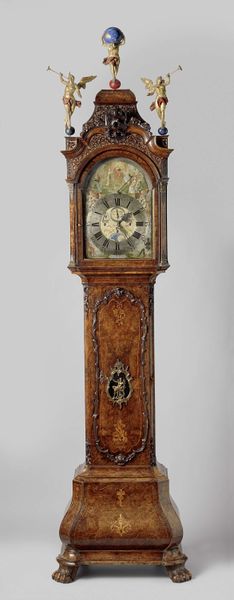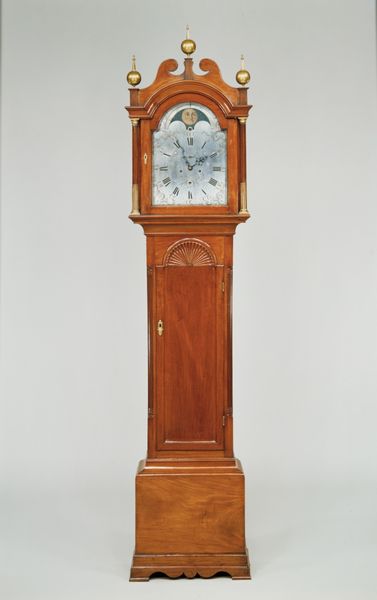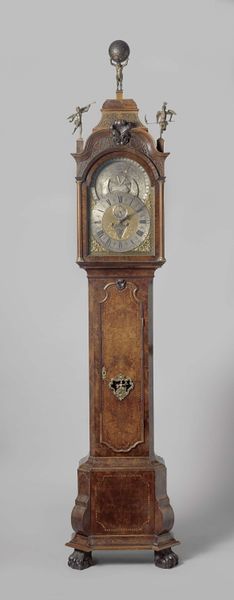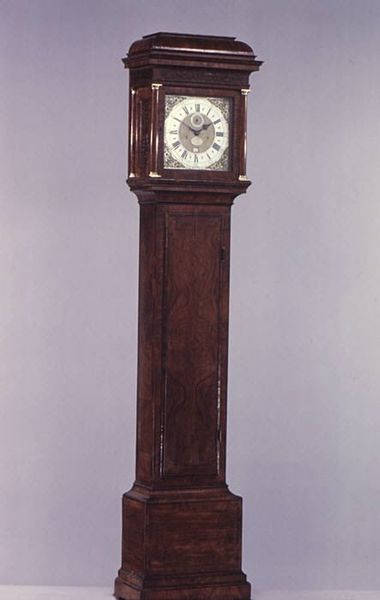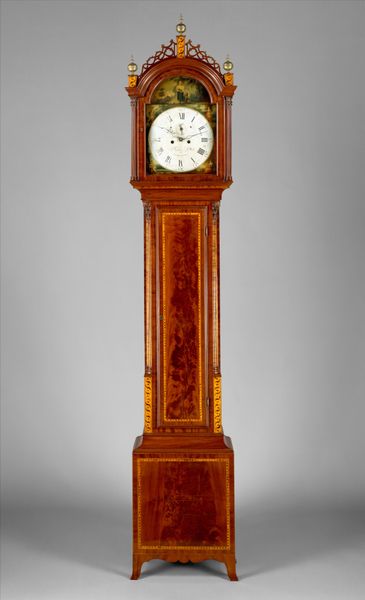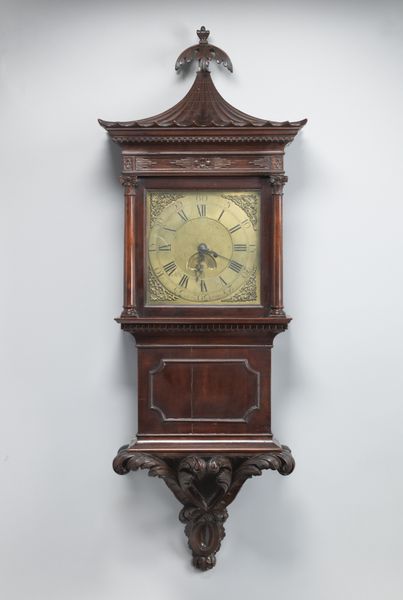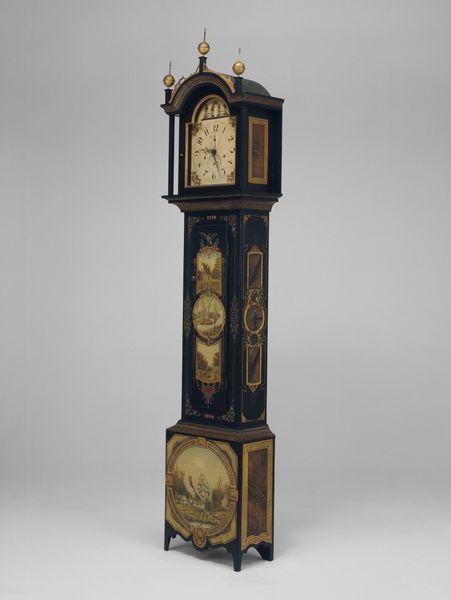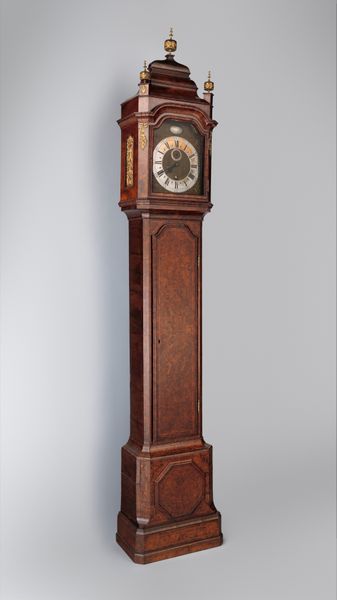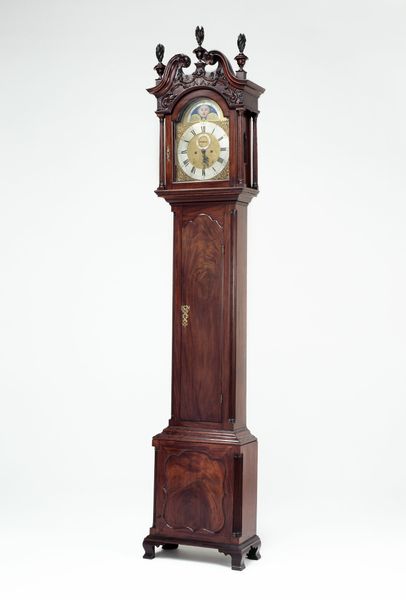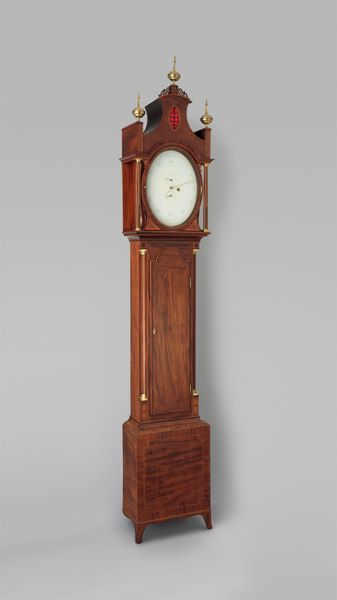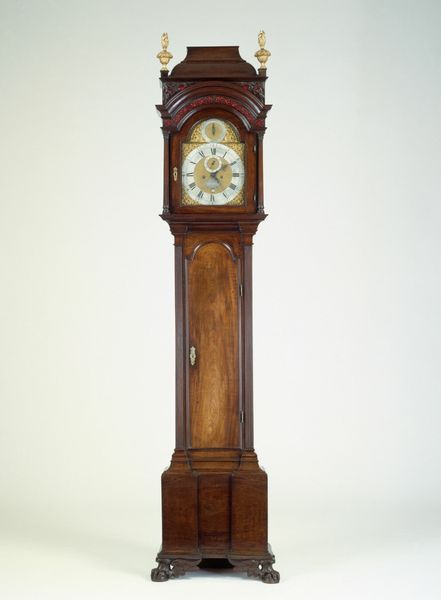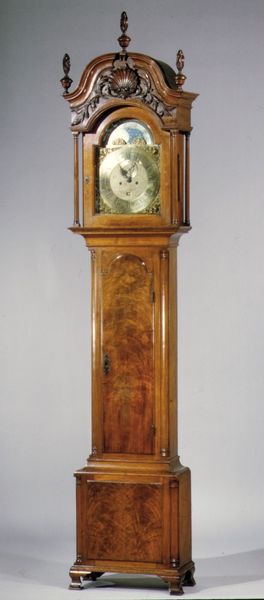
carving, sculpture, wood
#
carving
#
sculpture
#
sculpture
#
wood
#
decorative-art
#
rococo
Dimensions: height 311.0 cm, height 277.0 cm, width 51.0 cm, width 56.0 cm, depth 29.5 cm, width 48.0 cm, depth 24.5 cm
Copyright: Rijks Museum: Open Domain
Editor: This is an anonymous longcase clock, dating from around 1755 to 1765. It's currently housed in the Rijksmuseum. The main body of the clock is intricately carved from wood, and it strikes me as being quite a grand, even imposing piece. What strikes you about this work? Curator: I'm fascinated by the clock as a product of skilled labor. Consider the immense time and specialized craft involved in carving all that wood! Each flourish, each detail speaks to the social context of production during that era, bridging the gap between art and craft. The Rococo style isn’t just decoration, it’s evidence of particular workshops and trade networks. What do you make of the symbolism of time intertwined with these material concerns? Editor: Well, it's interesting to consider the actual *making* of the object in that detail, especially as it's a functional piece. The ornate decoration almost obscures the function, doesn't it? The time taken to *make* it, set against what it measures – time passing! It's a little ironic, in a way. Curator: Exactly! And the materials chosen, the specific type of wood, the quality of the carving, those things aren’t accidental. They reflect the wealth and status of the intended consumer. Do you think such craftsmanship elevates the clock beyond mere functionality? Does the skill involved make it *art*, not just craft? Editor: I suppose that's the question, isn't it? Looking at it this way, the materials themselves communicate a message. Before, I was just seeing decoration, but thinking about the skill and the expense… I can appreciate that it’s about so much more. Curator: And this analysis opens a door to a more profound appreciation of the artist's labour, their relationship with patrons, and the broader market forces at play during the clock's creation. Now, we aren't simply admiring an object, we're engaging with a historical record of labor and consumption. Editor: That’s a completely different way of looking at it, and I can see how a ‘simple’ clock can actually tell us so much. Thanks for sharing!
Comments
rijksmuseum about 2 years ago
⋮
The cabinetmaker made the case of this longcase clock as narrow as possible. Moreover, he placed an irregularly shaped, asymmetrical mirror on its front to counterbalance, as it were, the clock’s straight, angular form.The clock has a movement with fourteen melodies, and it shows the date, day of the week, month, phases of the moon and time of high tide.
Join the conversation
Join millions of artists and users on Artera today and experience the ultimate creative platform.
